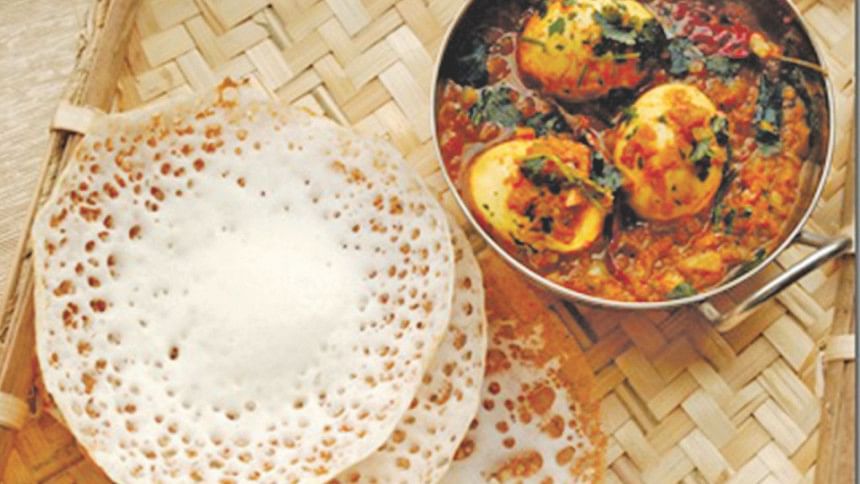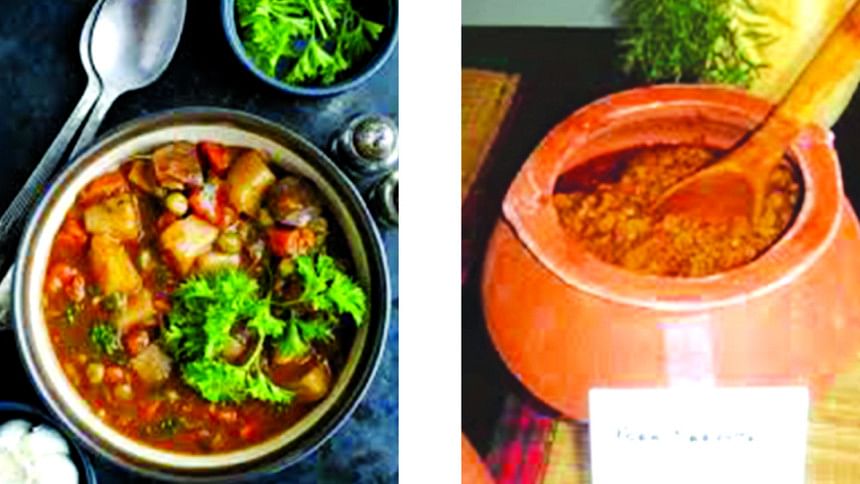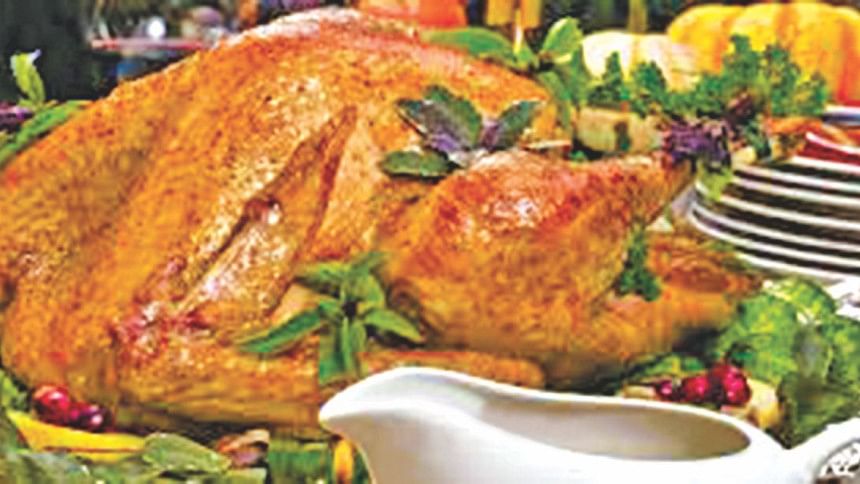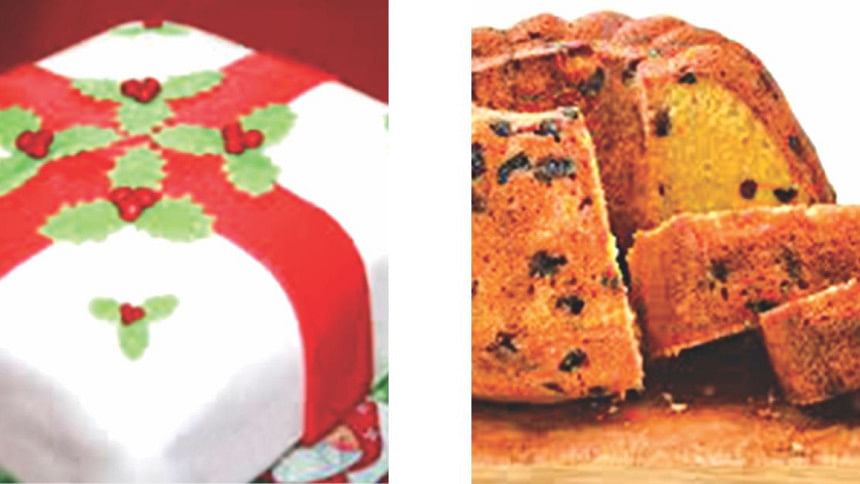Christmas – celebrating with food

"In my childhood the start of December in Colombo meant shopping for cake ingredients, then watching the elders chopping the fruits, with a lot of chatter and gossip. The smell of roasting spices... Then the whole cake coming together in one heady mix of brown delectability," Malathi, Colombo.
The month of December heralds the coming of Christmas. For Christians all over the world the spiritual significance of Christmas is marked by the birth of Jesus Christ. It is therefore a joyous occasion, which is celebrated by families and communities of Christians all over the world. Non-Christians also become drawn into the feeling of festiveness, as this is also the holiday season. A major expression of this joyousness is through the preparing, sharing and partaking of food.
The South Asian nations of Bangladesh, India, Sri Lanka, Pakistan and Nepal, which are home to heavenly spices and exquisite dishes, are no exception. In these nations, Christians celebrate the birth of Christ with food that is traditional and special.
Bangladesh
Christmas in Bengali is 'Boro Din' or "big day." Even though only around 0.3 percent of the population is Christian, December 25 is marked as a public holiday regardless. In churches throughout the country, Catholics and other denominations of Christians attend special church services. The joy of Christmas is expressed through traditional decorations of Nishan, the singing of the traditional Kirtan, and the partaking of festive food. Traditional foods include Pitha and Payesh. While fruit cake and festive sweets are also popular, with increasing number of patisseries opening up in the bigger cities.

India
India, the vast country with a one of the largest populations in the world, counts just 2.5 percent of those as Christians, yet Christmas is celebrated in great style. December 25 is even observed in Rashtrapati Bhavan or the president's house. In India the three significant Christian communities are the Goans, the Syrian Christians from Kerala, and the Anglo Indians. Each of these communities celebrates Christmas with festive food that is drawn from their own traditional culture as well as from the colonial past of India.
Sweets are a major component, preparing and sharing of which forms a major part of the festivities. Plates of sweets are distributed among neighbours and families. Goans prepare platters of sweets which include 'neureos' with coconut filling, 'kulkuls' covered in sugar, 'nankhatai', 'coconut barfi', 'marzipan', guava cheese, 'bebinca' (layered Goan pudding), 'dodol', and 'chakli' (savoury spirals). Homemade wines made from grape, coconut juice or ginger are also popular.
Fruit cake, especially prepared for Christmas is made by all three Christian communities, rich, delectable fruit cake prepared with eggs, dried fruits, nuts, spices all soaked in alcohol and slowly baked. This is eaten after midnight Mass, or as dessert after lunch or dinner.
Among the Syrian Christian community, the main festive meal consists of Appam, prepared with rice flour and coconut milk, accompanied with typical Kerala dishes like fishmoilee, Kerala chicken, spicy beef tomato curry, etc. Bread is also popular. Sliced bakery roti eaten with Kerala pork masala or spicy chilly fish masala.
Traditional Indian festive dishes are also popular, like Kerala chicken biriyani or ghee rice, eaten with roast duck or spicy roast pork.

For the Goans, roast suckling pig and or roast duck are a specialty for Christmas. A must have for the main course is 'sorpotel', a thick curry made from pork and liver and 'vindaloo' curry out of pork or beef. Spicy fish cooked in vinegar is also popular. All are accompaniments to rice pulao.
The festive food for Christmas among Anglo-Indians reflects strong English influences. Breakfast is homemade ham, salted meat, stew of chicken or beef, egg and bread. The main meal could consist of coconut rice, chicken curry, pork chops and beef steak with mashed potatoes. Dessert consists of Christmas pudding and mince pies.
Recipe for Sri Lankan vattalappam
This recipe is adapted from the book by Charmain Solomon. Vattalappam is Malay in origin and is a popular festive pudding in Sri Lanka.
Serves 6-8
Ingredients
4 eggs
175g palm sugar or jaggery
½ cup water
1½ cups thick coconut milk
¾ cup evaporated milk (unsweetened)
½ tsp ground cardamom
¼ teaspoon ground mace
Pinch of ground cloves
1 tbsp rose water
Method
Beat the eggs slightly (not frothy). Dissolve palm sugar in water over low heat. Cool slightly. Add palm sugar syrup to beaten eggs, add the coconut milk and stir to dissolve sugar. Strain through a fine strainer into a large jug, add evaporated milk, spices and rose water. Pour into individual custard cups. Put custard cups into a baking dish with water to come halfway up sides of cups and bake in a slow oven to set, (150-160c), for approximately 1¼ hours. Cool and chill custard before serving. Decorate with cashew nuts.
Sri Lanka
In the island nation of Sri Lanka, celebration of Christmas is universal to all communities, even though only around 7 percent of the population is Christian. Come December the whole country is abuzz in preparation for the festive season. Decorations are everywhere, special Christmas markets are set up on the streets and Christmas songs are blaring from buses and hotels.
Like in India, the food for the occasion reflects the local favorites as well as the colonial influences of the Portuguese, the Dutch and the British.
The fact that all communities in Sri Lanka are able to prepare Christmas festive food is partly made possible by the publication of the book "Ceylon Daily News Cookery Book" by Hilda Deutrom at the turn of the 20th century. It was a must have for all middle class housewives, and the recipes from this pioneering book formed the basis of the Christmas cake and other goodies.
The first of December heralds two important activities - the setting up of the Christmas tree, gaily decorated with baubles, balloons and stringers; and making of the Christmas cake. Although the idea of a fruit cake is borrowed from the English, the Sri Lankans have created their own version.

The dried fruits are all painstakingly chopped by hand. The fruits include local varieties like chow- chow preserve and pumpkin preserve. Cashew nuts are also chopped by hand. The mix is then soaked for a day either in brandy or local coconut 'arrack'. It is then mixed with eggs, flour and spices. The large quantities of cake mixes are then sent to the local bakery to be baked in slow, large ovens. The result is a delectable, brown, moist cake. Again liquor is sprinkled on top so that the cake can keep long. The cake is then sliced and carefully wrapped in festive paper to be shared among friends and family.
Another Sri Lankan Christmas specialty is 'breudher'. A cake with Dutch influences, often eaten with a piece of Dutch cheese. Another specialty is Love Cake, made with semolina and spices and harking to the Portuguese era.
The main Christmas meal, which could be lunch or dinner, has to be accompanied by local delicacies such as yellow rice, chicken dry roast, fried eggplant curry, spicy potato curry, cashew nut curry, pol sambol made with coconut and fish.
Middle and upper class sometimes go for the more western style turkey with all the trimmings. Homemade leg of ham soaked in beer and baked slowly with spices is also included.
Dessert could be vattalappamor coconut custard and Christmas cake. Also a must for Christmas is the Yule Log. A chocolate roll smothered in chocolate and cream, topped with a little ceramic robin sitting among red and green holly.
Pakistan and Nepal
Christians form a small community in Pakistan, which is a predominantly Muslim country, and in Nepal, a predominantly Hindu/Buddhist nation. Christmas day in both countries is declared a public holiday and the Christians celebrate with decorations, lights and carol singing in churches. Pakistan has a rich food tradition which the locals draw upon. The hotels and bakeries in the cities also offer Christmas cakes, Christmas puddings and other festive food.
In the mountain nation too, all Nepalese join in the festivities as they would with other festivals. The Christmas feasts could be western style turkey roast or traditional dishes like 'momo'.
Photo: Collected

 For all latest news, follow The Daily Star's Google News channel.
For all latest news, follow The Daily Star's Google News channel. 



Comments